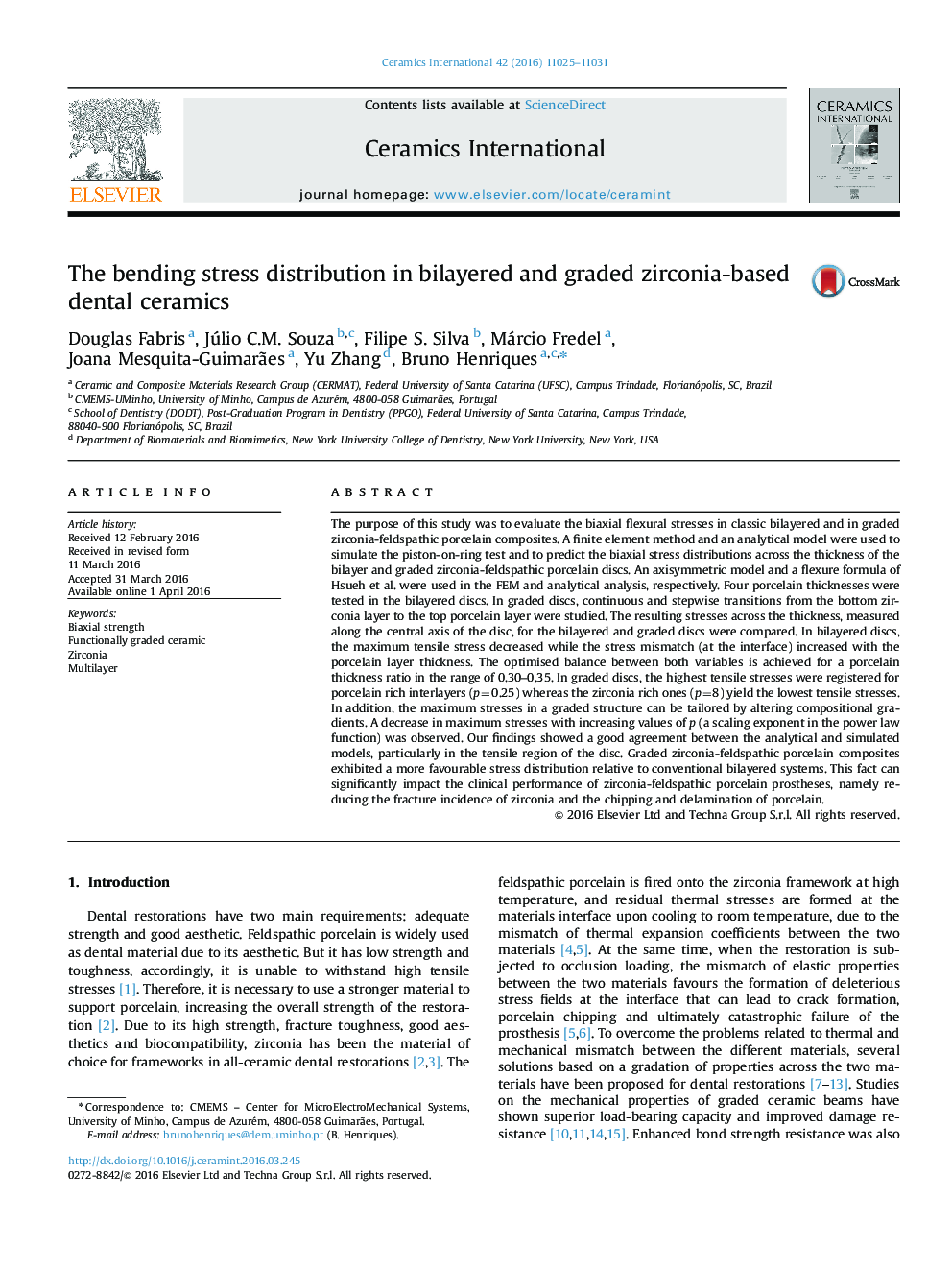| کد مقاله | کد نشریه | سال انتشار | مقاله انگلیسی | نسخه تمام متن |
|---|---|---|---|---|
| 1458655 | 989580 | 2016 | 7 صفحه PDF | دانلود رایگان |
The purpose of this study was to evaluate the biaxial flexural stresses in classic bilayered and in graded zirconia-feldspathic porcelain composites. A finite element method and an analytical model were used to simulate the piston-on-ring test and to predict the biaxial stress distributions across the thickness of the bilayer and graded zirconia-feldspathic porcelain discs. An axisymmetric model and a flexure formula of Hsueh et al. were used in the FEM and analytical analysis, respectively. Four porcelain thicknesses were tested in the bilayered discs. In graded discs, continuous and stepwise transitions from the bottom zirconia layer to the top porcelain layer were studied. The resulting stresses across the thickness, measured along the central axis of the disc, for the bilayered and graded discs were compared. In bilayered discs, the maximum tensile stress decreased while the stress mismatch (at the interface) increased with the porcelain layer thickness. The optimised balance between both variables is achieved for a porcelain thickness ratio in the range of 0.30–0.35. In graded discs, the highest tensile stresses were registered for porcelain rich interlayers (p=0.25) whereas the zirconia rich ones (p=8) yield the lowest tensile stresses. In addition, the maximum stresses in a graded structure can be tailored by altering compositional gradients. A decrease in maximum stresses with increasing values of p (a scaling exponent in the power law function) was observed. Our findings showed a good agreement between the analytical and simulated models, particularly in the tensile region of the disc. Graded zirconia-feldspathic porcelain composites exhibited a more favourable stress distribution relative to conventional bilayered systems. This fact can significantly impact the clinical performance of zirconia-feldspathic porcelain prostheses, namely reducing the fracture incidence of zirconia and the chipping and delamination of porcelain.
Journal: Ceramics International - Volume 42, Issue 9, July 2016, Pages 11025–11031
